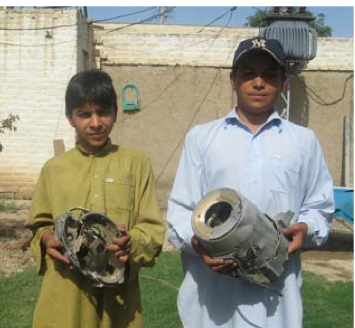At what point do we stop calling it the “Afghanistan War?”
The Campaign for Innocent Victims in Armed Conflict (CIVIC), released a new study of civilian casualties in Pakistan. They find, among other things: “In 2009, an estimated 2,300 civilians were killed in terror attacks alone with many more injured. Counting losses from Pakistani military operations and U.S. drone strikes, civilian casualties in Pakistan likely exceed in number those in neighboring Afghanistan.” [emphasis mine].
The majority of casualties are the victims of terror attacks and extrajudicial killings by the Taliban — but that is what you expect from a group like the Taliban. Still, a not insignificant number of civilian non-combatant casualties are from Pakistani military action and U.S. drone strikes. On the latter, the report provides strong evidence that the number of the civilian casualties from drone strikes are significantly higher than the United States admits.


The report draws on some existing surveys of US drone strikes and finds that approximately 120 drone strikes killed between 804 and 1367 people in 2009. The United States claims only 20 of those killed were civilians. CIVIC investigated only 9 out of 120 attacks and found at least 30 alleged civilian deaths. In June, one attack alone took the lives of 45 to 60 people, up to 18 of whom were believed to be civilians.
What is most remarkable about this report is that CIVIC speaks directly to individual victims of drone attacks:
Daud Khan, from North Waziristan, was at his home with his 10 year-old son when a drone missile struck. He says, “The day before some Taliban had come to the house and asked for lunch. I feared them and was unable to stop them because all the local people must offer them food. They stayed for about one hour and then left. The very next day our house was hit… My only son Khaliq was killed. I saw his body, completely burned.” He said that while the drone strikes were effective against the Taliban, “they wander about the towns and villages and create problems for all the other people… they are violent and cruel actions.” Without the money to rebuild their home, Daud Khan and his family were forced to leave their village in North Waziristan.
And:
In June 2010, Shakeel Khan was sitting in his home in North Waziristan with his family when a drone missile struck: “I was resting with my parents in one room when it happened. God saved my parents and I, but my brother, his wife, and children were all killed.” The children were 5 and 3 years old. Khan says, “I must support my aged parents now but I earn a very little amount which can hardly meet our expenses. We don’t have enough to reconstruct our house and fear that the drones will strike us again.”
As an organization, CIVIC lobbies for compensation for innocent victims in conflict. Their founder, Marla Ruzika was killed in Iraq in 2005 on a mission to document civilian casualties. As a result of her organization’s work, the United States now has a process to pay compensation to civilians harmed by American military action in Iraq and Afghanistan.
The report shows that there is a haphazard mechanism by which local provincial officials compensate innocent Pakistani’s for damages incurred from wrongful attacks by the Pakistan military. Pakistani victims of American drone strikes, though, do not qualify for this kind of compensation. Neither are Pakistani victims given access to the same compensation mechanisms in place in Afghanistan and Iraq.
If, as the report says, the brunt of civilian casualties are now being incurred on the Pakistani side of the border, it would make moral sense (and likely benefit the counter-insurgency effort) to extend the same kind of compensation to innocent victims of U.S. military strikes in Pakistan. An innocent victim is an innocent victim, no matter what the geography.
Photo credit CIVIC. “Children in North Waziristan with debris from drone missile”
